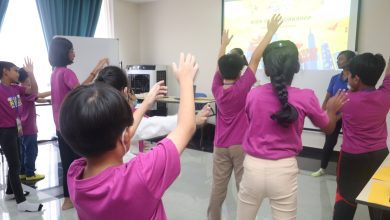By SeeFoon Chan-Koppen
F.A.S.T. is an acronym used as a mnemonic to help detect and enhance responsiveness to the needs of a person having a stroke. The acronym stands for ‘Facial drooping, Arm weakness, Speech difficulties and Time to call emergency services’.


Fast is also Dato’ Dr Hj Zakaria A. Kadir’s admonition to the general public to react and respond to a stroke.
“Stroke is a serious emergency. Every second that passes when a person has a stroke sees the loss of 32,000 neurons in the brain. Every hour that passes without medical attention sees the loss of 120 million neurons. Therefore every second counts when a person has a stroke. The sooner a patient gets to the hospital the better his or her chances of recovery,” said Dato’ Zakaria emphatically.
“Stroke is the second most common cause of death and 20 million people die annually worldwide, so it is important for people to acquaint themselves with the symptoms especially those who are hypertensive,” he stressed.
According to Dato’ Zakaria the signs of a stroke may include numbness or weakness on one side of the body; an inability to speak; or difficulty in swallowing or smiling; sudden difficulty walking or dizziness; loss of balance or problems with coordination; severe headache with no known cause. Pain is usually not one of the symptoms.
Family members, spouses or friends can recognise if someone is having a stroke by checking the following:
Face Drooping: Does one side of the face droop or is it numb? Ask the person to smile.
Arm Weakness: Is one arm weak or numb? Ask the person to raise both arms. Does one arm drift downward?
Speech Difficulty: Is speech slurred, are they unable to speak, or are they hard to understand? Ask the person to repeat a simple sentence, like “the sky is blue”. Is the sentence repeated correctly?
If the person shows any of these symptoms, even if the symptoms go away, call for an ambulance and get them to the hospital immediately. (StrokeAssociation.org/warningsigns)
Risk Factors and Speed
Dato’ Zakaria lists diabetes, hypertension, heart disease and high cholesterol as risk factors for stroke and the time factor of getting to the hospital for treatment is critical for recovery:
- Under 1 hour being 8X success rate
- One and a half hours 4X success rate
- Two hours 3X success rate
- Anything over four and half hours may mean some major damage has occurred or even death.
Hence the necessity of speed to get treatment.
Treatment
Once at the hospital, stroke is confirmed by a CT Scan which takes 5 minutes and treatment is immediately given. The first step in treatment is to control blood pressure and Recombinant Tissue Plasminogen Activator (RTPA) is administered.
If the CT scan detects bleeding in the brain, RTPA is not indicated, the patient will be monitored if surgical intervention is called for.
Final Words
Dato’ Zakaria has some final words of advice to avoid a stroke in otherwise normal people with no symptoms. “In today’s fast-paced world, stress is a contributory factor and can hasten stroke. Added to this, obesity is increasing and our fast food addiction with its high sugar, high-fat content contributes to this. Stopping smoking is essential as is exercise, certainly a gentle one for the older generation three times a week is recommended,” he concluded. .
Dato’ Dr Hj Zakaria A. Kadir DPMP
MD (USM) MSC (Glasgow) MRCP (UK) FRCP (Glasgow)
Consultant Physician and Neurologist
2nd Floor Suite 2-27 KPJ Ipoh Specialist Hospital, 28 Jalan Raja Dihilir, Ipoh.
Tel: 05 240 8777 ext. 270


